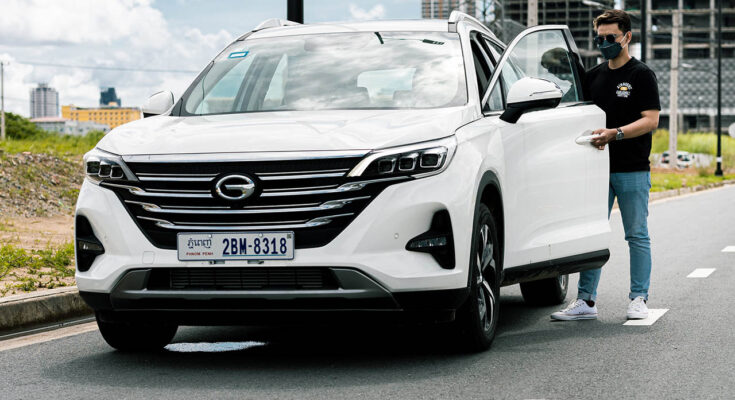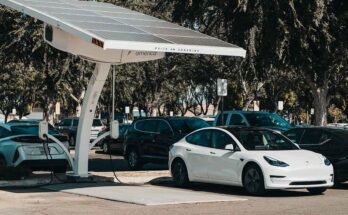As we venture into 2024, the autonomous vehicle revolution is accelerating, reshaping how we think about transportation, urban planning, and connectivity. Innovations in AI, machine learning, and sensor technology are propelling us towards a future where self-driving cars are not just prototypes, but integral parts of our daily lives. This shift presents an exciting array of opportunities and challenges alike, foretelling a significant transformation in our mobility, environmental impact, and even the fabric of society. This document aims to explore the landscape of autonomous vehicles in 2024, highlight the latest advancements, and discuss the implications for consumers, policymakers, and businesses in this rapidly evolving space.
Technological Advances
Breakthroughs in AI and Machine Learning
Artificial intelligence and machine learning are the cornerstones of the autonomous vehicle revolution. In 2024, these technologies are stepping out of their nascent stages into more sophisticated domains, enabling vehicles to process vast amounts of data in real-time, make decisions, and learn from new scenarios. The breakthroughs in deep learning algorithms have particularly enhanced a vehicle’s ability to recognize patterns, predict human behavior, and navigate through complex environments with greater precision and safety than ever before.
Development of Advanced Sensors and Perception Systems
The development of advanced sensors and perception systems has been critical to the progress in autonomous vehicles. These systems form the ‘eyes’ and ‘ears’ of self-driving cars, combining data from LIDAR, radar, cameras, and ultrasonic sensors to create a detailed understanding of the vehicle’s surroundings. In 2024, sensor technology has advanced to the point where vehicles can detect objects with astonishing accuracy, even in harsh weather conditions or low-light situations, vastly improving reliability and moving us closer to full autonomy.
Integration of 5G Technology for Enhanced Connectivity
Integration of 5G technology has also played a pivotal role in the advancement of autonomous vehicles. By 2024, 5G networks provide the high-speed, low-latency communication that is essential for the real-time data transfer autonomous vehicles require. This connectivity not only allows vehicles to communicate with each other, but also with traffic infrastructure, pedestrians’ smartphones, and vast networks of IoT devices, creating a more cohesive and responsive transportation ecosystem.
Regulatory Landscape
Updates on Government Regulations and Policies
The regulatory climate for autonomous vehicles in 2024 has seen substantial evolution to keep pace with technological advancements. Governments around the world have been actively updating traffic laws, safety regulations, and liability frameworks to accommodate the unique needs of autonomous transportation. In the United States, the Department of Transportation has rolled out new federal guidelines to standardize autonomous vehicle testing and deployment, aiming to balance innovation with public safety. These policies also address cybersecurity concerns, mandating stringent protections against hacking and data breaches in all autonomous vehicles.
Impact of Regulatory Changes on the Deployment of Autonomous Vehicles
The updated regulatory changes have had a definitive impact on the deployment of autonomous vehicles. By creating a more structured environment, manufacturers are better equipped to navigate the legal landscape and focus on technological development. These standardized guidelines have also increased public trust in the safety of autonomous vehicles, which is critical for widespread adoption. Furthermore, the global harmonization of regulations has opened up new markets, as vehicles designed to comply with international standards can be more readily deployed across different regions. However, the industry must continually engage with policymakers to ensure that regulations remain adaptive to the fast pace of innovation within the field.
Market Trends
Growth of Autonomous Vehicle Startups and Partnerships
The landscape of autonomous vehicle industry in 2024 thrives due to the burgeoning number of startups that specialize in various aspects of this technology, from AI software to advanced imaging systems. These agile and innovative companies are instrumental in pushing the boundaries of what’s possible in autonomous travel. Furthermore, strategic partnerships between these startups and established tech giants or automotive manufacturers are catalyzing progress. Such collaborations are combining cutting-edge technology with scalable production capabilities, accelerating the time-to-market for new advancements and fostering an ecosystem ripe for continued innovation.
Adoption of Autonomous Technology by Traditional Automotive Companies
Concurrently, traditional automotive companies are not standing idly by. In 2024, a significant shift can be observed as these industry stalwarts integrate autonomous technology into their product lines. This trend is characterized by either developing in-house solutions or forming partnerships with tech companies to retrofit their existing models with autonomous capabilities. By embracing this tech-centric approach, legacy automakers are securing their place in the future of transportation, making a clear statement that the integration of autonomous features is fast becoming a standard expectation, not just a luxury appendage, for new vehicles rolling off the assembly line.
Consumer Adoption
Shift in Consumer Attitudes Towards Autonomous Vehicles
As the autonomous vehicle industry continues to mature in 2024, we are witnessing a notable shift in consumer attitudes. Early skepticism is gradually giving way to increased curiosity and acceptance, thanks in part to demonstrable advancements in vehicle safety and reliability. Public demonstrations, pilot programs, and the sharing of positive user experiences have all contributed to demystifying self-driving technologies. Consumers are starting to envision the tangible benefits autonomous vehicles can offer, such as reduced traffic congestion, lower accident rates, and the luxury of free time during commutes.
Factors Influencing Consumer Trust and Acceptance
Consumer trust and acceptance are being influenced by several key factors. Foremost among these is the transparency and frequency of safety records published by autonomous vehicle companies, which highlight the performance and response of self-driving cars in various scenarios. Educational initiatives undertaken by manufacturers and policymakers are also instrumental in shaping informed opinions. Additionally, the integration of cybersecurity measures and the handling of user data with utmost privacy standards are critical in building consumer confidence. Lastly, endorsements from authoritative safety organizations and improvements noted in incremental software updates serve to reassure consumers about the ongoing commitment to safety and enhancement of autonomous vehicle systems.




